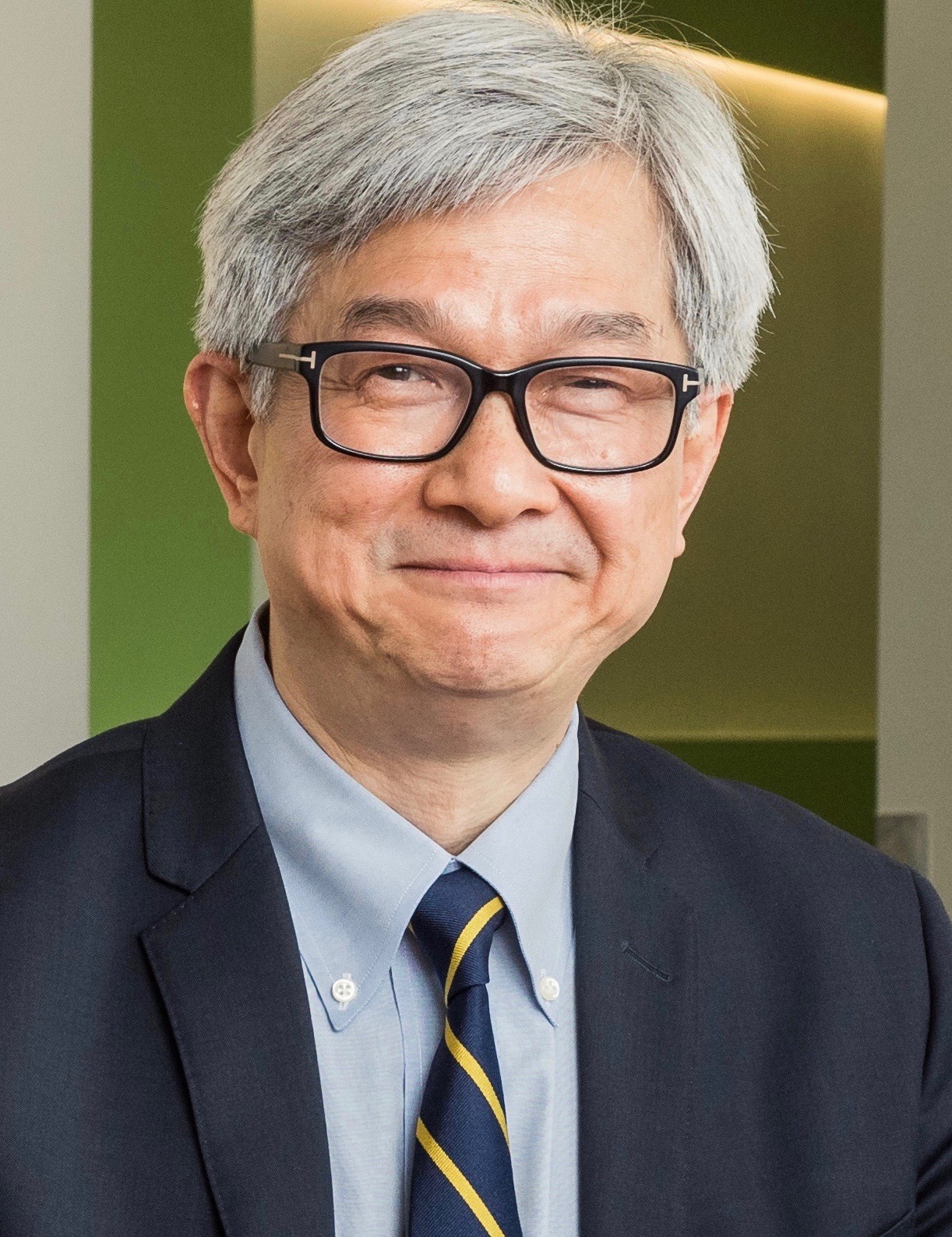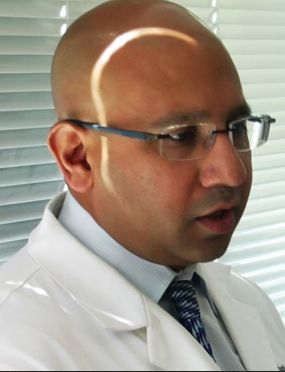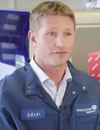Other Track AgendasCirculating Biomarkers: Cell-Free Nucleic Acids, Proteins and Rare Circulating Cells | Exosomes and Extracellular Vesicles (EV): Research, Diagnostics and Therapeutics Opportunities |

Monday, 20 March 201708:00 | Conference Registration, Conference Materials Pick-Up, Morning Coffee and Breakfast Pastries | |
Session Title: Conference Plenary Session -- Current Status and Emerging Themes in Circulating Biomarkers, circa 2017 |
| | |
Plenary Session Chairman: Professor Dominique PV de Kleijn, University Medical Center Utrecht |
| | 09:00 |  | Keynote Presentation Blood-based Testing for Somatic Alterations in Non-Small Cell Lung Cancer
Walter Koch, Vice President, Roche Molecular Systems, United States of America
For cancer patients with inaccessible or unavailable tumor tissue biopsies, an unmet Medical need exists for a surrogate for tissue testing. New ultra-sensitive PCR and NGS technologies allow analysis of tumor derived nucleic acids and cells in blood with potential applications to therapy selection for targeted therapeutics, assessment of initial therapy response, monitoring for disease progression during treatment, and identification of drug resistance mechanisms that can suggest further treatment options. This presentation will cover clinical development of a FDA approved assay detecting EGFR mutations in plasma from NSCLC patients to highlight what is possible, what has been achieved, and what challenges remain before Liquid Biopsy applications find routine clinical use. |
| 09:30 |  | Keynote Presentation Exosomes and Their Potential as Therapeutics
Jan Lötvall, Professor Krefting Research Centre, University of Gothenburg, Chief Scientist, Codiak BioSciences; Founding President of ISEV, United States of America
This presentation will discuss the mechanisms by which exosomes can
exert their effects in recipient cells, discussing their RNA and protein
cargo. Further, the talk will discuss the overall vesicular secretome,
including subgroups of extracellular vesicles, such as microvesicles,
exosomes, and subpopulations within each group. Lastly, the talk will
discuss opportunities of high jacking the exosome cell-to-cell
communication pathways to develop the next generation of biologicals
with the aim to cure complicated diseases. |
| 10:00 |  | Keynote Presentation Diagnosis of Ischemic Heart Disease Using Plasma Extracellular Vesicles
Dominique PV de Kleijn, Professor Experimental Vascular Surgery, Professor Netherlands Heart Institute, University Medical Center Utrecht, The Netherlands, Netherlands
Cardiovascular Disease (CVD) is with the cardiovascular events of
Ischemic Heart Disease and Stroke, the number 1 and 2 cause of death in
the world and expect to increase especially in Asia. Ischemic heart
disease (IHD) comprises 3 entities: stable coronary artery disease
(SCAD), unstable angina (UA) and myocardial infarction (MI). Because IHD
is associated with an increased risk of adverse clinical events such as
heart failure and death, early recognition of IHD is of utmost
importance. However, to diagnosis IHD is challenging, as many patients
present with atypical symptoms. It is known that women have a different
symptom sensation than men. Troponins are the main diagnostic tool for
detection of MI. Blood biomarkers for SCAD (typically causing stable
angina) and UA, however, are not available. These diagnoses frequently
require hospital visits/admissions for time-consuming and costly
(non)invasive tests. We show that the plasma extracellular vesicle
content can be used as an accurate source for early diagnosis of SCAD
and UA. |
| 10:30 | Coffee Break and Networking | 11:15 |  | Keynote Presentation New Tools for Liquid Biopsies: Microfluidic Platforms for the Efficient Isolation and Molecular Profiling of Circulating Tumor Cells (CTCs), Cell Free DNA (cfDNA) and Nanovesicles (Exosomes)
Steve Soper, Foundation Distinguished Professor, Director, Center of BioModular Multi-Scale System for Precision Medicine, The University of Kansas, United States of America
Liquid biopsies are generating great interest within the biomedical community due to the simplicity for securing important biomarkers to manage complex diseases, such as many of the cancer-related diseases. These circulating markers consist of CTCs, cfDNA and exosomes. We are developing a suite of microfluidic devices that are can process whole blood directly and engineered to efficiently search for a variety of disease-associated liquid biopsy markers from divergent subpopulations comprising the tumor microenvironment that can supply complementary clinical information. Each microfluidic device can isolate the target with recovery >90% and sufficient purity (>80%) to enable downstream molecular analysis of the particular biomarker. The microfluidic devices are made from thermoplastics via injection molding to allow for mass-production of devices with tight compliancy to accommodate clinical implementation. In this presentation, information will be shared on the operational parameters of these devices for the selection of liquid biopsy markers, and the downstream molecular information that can be garnered from the isolated markers in diseases such as colorectal, ovarian, breast, pancreatic and prostate cancers as well as some of the liquid-based cancers (acute myeloid leukemia). |
| 11:45 |  | Keynote Presentation Saliva Liquid Biopsy (sLB)
David Wong, Felix and Mildred Yip Endowed Chair in Dentistry; Director for UCLA Center for Oral/Head & Neck Oncology Research, University of California-Los Angeles, United States of America
Liquid biopsy is a rapidly emerging field to address this unmet clinical
need as diagnostics based on cell-free circulating tumor DNA (ctDNA)
can be a surrogate for the entire tumor genome. The use of ctDNA via
liquid biopsy will facilitate analysis of tumor genomics that is
urgently needed for molecular targeted therapy. Currently, most targeted
approaches are based on PCR and/or next generation sequencing (NGS) for
liquid biopsy applications with performance concordance in the 70-80%
range with biopsy-based genotyping. “Electric Field Induced Release and
Measurement (EFIRM)” is an emerging liquid biopsy technology that
provides the most accurate detection that can assist clinical treatment
decisions for the most common subtype of lung cancer, non-small cell
lung cancer (NSCLC), with tyrosine kinase inhibitors (TKI) that can
extend the disease progress free survival period of these patients.
EFIRM can detection ctDNA at single copy level whereas ddPCR detects
ctDNA a minimum of 10 copy number. In addition EFIRM requires only 40 µl
of sample volume, no sample processing, reaction time is 15min and can
be performed at the point-of-care or high throughput reference lab using
plasma or saliva. In two blinded independent clinical studies, EFIRM
detects actionable EGFR mutations in NSCLC patients with >95%
concordance with biopsy-based genotyping. EFIRM is minimally/
non-invasive detecting the most common EGFR gene mutations that are
treatable with TKI such as Gefitinib or Erlotinib to effectively extend
the progression free survival of lung cancer patients. |
| 12:15 |  | Keynote Presentation EVs Add New Dimensions to Cancer Clinic
Xandra Breakefield, Professor, Mass General Hospital (MGH)/Harvard Medical School, United States of America
Critical issues in cancer treatment are early detection, personalized data on gene drivers, and new therapies. In the case of both brain tumors, which are not easily accessible, and peripheral tumors, which may metastasize all over the body, we need to obtain clinically critical information from collective biofluids. Extracellular vesicles (EVs) have become a clinically relevant resource of biomarker information by providing a means to sensitively detect mutant proteins, DNA and RNA in biofluids, including blood, cerebral spinal fluid (CSF) and urine samples. Assays and devices to glean this information are emerging as products for clinical analyses. Waiting in the wings, and about to erupt, is the potential to use EVs as therapeutic delivery vehicles which can be derived from the patients’ own cells and target tumors throughout the body. |
| 12:45 | Coffee Break and Networking in the Exhibit Hall: Visit Exhibitors and Poster Viewing | |
Session Title: Convergence of Circulating Cell-Free Nucleic Acids with Other Classes of Circulating Biomarkers |
| | 14:00 | Validation of miRNA as Diagnostic and Prognostic Biomarkers for Multiple Sclerosis
Roopali Gandhi, Assistant Professor in Neurology, Head of MS Biomarkers, Brigham and Women's Hospital/Harvard Medical School, United States of America
Multiple sclerosis (MS) is an autoimmune disease characterized by progressive neuronal demyelination, resulting in varying degrees of disability over time. MS is usually diagnosed based on the clinical symptoms and Magnetic Resonance Imaging (MRI) analysis. There is an urgent need to find blood-based biomarker for MS disease diagnosis, disease stage, and to study treatment response. Following a two-year discovery and validation phase, we performed a multi-center international validation study aiming to investigate the potential use of miRNA expression as non-invasive biomarkers for MS disease diagnosis, disease stage, and association with MS clinical parameters. We found miRNAs that were differentially expressed in MS patients and associated with its clinical parameters. These miRNAs of interest exhibit clear biological significance in MS pathophysiology and are promising candidates for further exploration of their potential use in developing predictive diagnostic, prognostic, or therapeutic tools for MS. | 14:30 |  | Keynote Presentation Plasma RNA Signatures of Cardiac Remodeling in Heart Failure Play a Role in Disease Pathogenesis
Saumya Das, Assistant Professor in Medicine, Beth Israel Deaconess Medical Center and Mass General Hospital, United States of America
In the modern era of revascularization, acute mortality from coronary artery disease has decreased. However, adverse cardiac remodeling associated with ischemic heart disease combined with the explosion of cardiometabolic diseases has led to an epidemic of heart failure. There is a large unmet need to discover novel prognostic biomarkers and functional mediators of cardiac remodeling that may be exploited for novel therapies. Plasma extracellular microRNAs have been characterized as diagnostic biomarkers in cardiovascular diseases. Our work has identified plasma microRNA signatures of cardiac remodeling in patients with chronic heart failure and in patients post myocardial infarction. Bioinformatics and network analyses combined with experimental work has demonstrated that the microRNA components of these signatures are highly interconnected and regulate pathways of inflammation, cell growth and fibrosis. Finally, the use of next generation sequencing techniques to expand the repertoire the plasma RNA biomarkers has identified non-miRNA small RNAs, including snoRNAs, Y-RNAs and tRNA fragments as possible novel biomarkers of cardiovascular diseases. |
| 15:00 | Separation of Circulating Biomarkers Using nanoDLD Chip Technology
Stacey Gifford, Research Fellow, IBM Research, United States of America
Isolation of exosomes and circulating cell-free DNA has been an ongoing challenge in the development of the liquid biopsy. By scaling deterministic lateral displacement arrays to the nanoscale, we have fabricated a chip-based technology enabling the separation of particles down to 20 nm. We have demonstrated the ability to sub-fractionate exosomes and DNA by size and measure their size distribution on-chip. Additionally, we can label exosomal surface markers and quantify the distribution of these proteins within a population of exosomes, enabling size and surface marker correlation. Our aim is to scale this technology in order to provide both a large-scale preparative and diagnostic tool for exosome and cfDNA isolation and detection. | 16:00 | Coffee Break and Networking in the Exhibit Hall | |
Session Title: Microfluidics Deployment for Studying Circulating Biomarkers |
| | 16:30 |  | Keynote Presentation Microfluidic Enrichment for Single Cancer Cell Analysis
Chwee Teck Lim, NUS Society Chair Professor, Department of Biomedical Engineering, Institute for Health Innovation & Technology (iHealthtech), Mechanobiology Institute, National University of Singapore, Singapore
Tumor heterogeneity is currently a major hindrance to cancer diagnosis and treatment. Here, microfluidic technology is used to enrich and enable probing of the molecular heterogeneity of single circulating tumor cells so as to obtain patient derived information for the personalized treatment of cancer patients.
Tumor heterogeneity is a general trait of cancer which has proven to be a major hindrance in cancer classification, diagnosis and treatment. Cancer can be classified loosely into a few distinct sub-types, but recent technological advances have begun to reveal the true extent of its heterogeneity. Single cell analysis is emerging as an important approach to detect variations in morphology or genetic, proteomic and molecular expression. Here, we will present several novel microfluidic technologies to probe the heterogeneity of cancer patient derived circulating tumor cells (CTCs). These include detecting the proteolytic capability of each CTC to obtain hint of their invasiveness as well as identify unique actionable key driver mutations with aim of improving anticancer therapy. It is hope that this single cell analysis approach will not only lead to more precised treatment of cancer patients from the individually derived information of these tumor cells, but will also aid in the development of better drugs to combat this disease. |
| 17:00 |  | Keynote Presentation Closed Microfluidic PCR-based Surface Plasmon Resonance Biosensor for Multiple Detection of Circulating Tumor DNAs
Sehyun Shin, Professor & Director, Nano-Biofluignostic Engineering Research Center, Korea University and Anam/Guro Hospital of Korea University, Korea South
Circulating tumor DNA (ctDNA) has been demonstrated as the most promising biomarker for non-invasive assessment of cancer as well as the most accurate predictor of cancer treatment responses. However, there are several hundreds of tumor DNAs even for one organ cancer (i.e., Lung cancer) and thus multiplexing is highly required for cancer detection from blood. The conventional techniques have been faced critical limits including multiplexing and cost and thus innovative technologies are highly required. Here, we present a highly precise and selective assay for detecting epidermal growth factor receptor (EGFR) mutations in plasma (or liquid biopsy) using DNA-DNA hybridization and Au nanoparticle probe with a lab-made surface plasmon resonance (SPR) sensometry. Targeted DNAs are amplified in a closed-loop microfluidic PCR module consisting of three different temperature regions. We prepared wild type EGFR, EGFR mutants including point mutation and deletion. Linker DNAs coated on a sensor surface of SPR captured different DNA types. Due to characteristics of SPRi, the whole assay process was monitored in real-time and completed within an hour. This study as a proof of concept can be further expanded into high degree of multiplexing detection of major and known ctDNAs, which could provide a solution for clinical unmet needs in cancer treatment and early detection. |
| 17:30 |  | Keynote Presentation Microfluidics for the Interrogation of Circulating Biomarkers in Glioblastoma Patients
Shannon Stott, Assistant Professor, Massachusetts General Hospital & Harvard Medical School, United States of America
Clinically, there is a dire need to diagnose and monitor brain tumor recurrence and to detect mutations in real time to guide patient treatment. A blood-based ‘liquid biopsy’ that captures and analyzes both circulating tumor cells (CTCs) and extracellular vesicles (EVs) would be an ideal approach to better predict tumor response in glioblastoma patients without the need for highly invasive brain surgery. Through these blood-on-a-chip assays, we aim to gain a better understanding of when these important tumor derived CTCs and extracellular vesicles are released and how we can exploit their molecular content to better guide patient treatment. Working in partnership with Dr. Brian Nahed at MGH, we have used our microfluidic technologies to isolate CTCs and EVs from the blood of patients with advanced glioblastoma multiforme. In this talk, data will be presented on our technological approach as well as our effort to interrogate their molecular content using next generation RNA sequencing. Through the microfluidic isolation of blood based biomarkers from patients, our goal is to obtain complementary data to the current standard of care to help better guide treatment. |
| 18:00 | Networking Reception with Beer, Wine and Appetizers. Engage with Fellow Delegates and Enjoy Views of the Charles River and the Boston Skyline | 19:30 | Close of Day 1 of the Conference | 19:45 | Dinner Short Course on Microfluidics for Studying Circulating Biomarkers [Separate Registration Required] |
Tuesday, 21 March 201706:30 | Morning Coffee, Breakfast Pastries and Networking in the Exhibit Hall | 07:00 | Breakfast Briefing: From Discovery to Diagnostic: Building miRNA-based Tools for Pediatric Heart Failure Patients
Pete Mariner, Founder, CoramiR Biomedical, United States of America
Circulating miRNAs are important biomarkers of disease, and several methodologies are available that identify circulating miRNAs with varied specificity and reproducibility. We have previously shown that circulating miRNAs can accurately predict recovery from heart failure in pediatric dilated cardiomyopathy patients, and to determine cardiac allograft vasculopathy. Our previous work was performed using serum-extracted RNA and Life Technologies miRNA array cards. Here we describe an improvement to the original methodology that consists of performing miRNA arrays directly from serum, without the need of RNA extraction. Importantly, although 250 µl of serum were necessary to perform RNA extraction, only 3 µl are necessary to perform serum-miRNA-arrays. Furthermore, a thorough description of the methodology used to improve release of miRNAs from microparticles is provided. Moreover, whereas circulating miRNA studies are often based on relative comparison values, an absolute quantification of circulating miRNAs is necessary of tests will be standardize across laboratories. We have successfully generated an absolute quantification platform that can be easily implemented in RT-PCR confirmatory studies. In summary, the work described here provides specific guidelines to detect and quantify circulating miRNAs. | 07:30 | Breakfast Briefing: Epigenetic Alterations to DNA Architecture in Cancer
Eugen Molodysky, Clinical Associate Professor, Sydney Medical School, University of Sydney, Australia
| |
Session Title: Technology Development in the Interrogation of Circulating Cell-Free DNA and Circulating RNAs |
| | 08:00 | Therapeutic Response Monitoring Using an NGS-based ctDNA Assay
Abhijit Patel, Associate Professor, Yale University School of Medicine, United States of America
Our group has developed NGS-based technologies that utilize novel molecular and computational error suppression techniques to enable ultra-sensitive measurement of ctDNA. Data will be presented from ongoing studies to establish the clinical utility of these technologies, with a particular focus on monitoring of therapeutic response. | 08:30 |  | Keynote Presentation Donor-Derived Cell-Free DNA: An Accurate, Precise, and Dynamic Biomarker for Improved Management of Solid Organ Transplant Patients
John Sninsky, Chief Scientific Officer, CareDx, United States of America
Cell-free DNA (cfDNA) has been described as a biomarker for prenatal testing, cancer, and organ transplantation, each of which present different clinical and technological challenges. cfDNA circulating in the plasma of transplant recipients represents a mixture of recipient cfDNA and residual nucleosome-protected genomic regions released from dying cells of the allograft (“transgenome”). The genomes of the organ donor and allograft recipient are distinguishable by sequencing total cfDNA from the plasma. A clinical-grade cfDNA NextGen sequencing (NGS) assay was developed to monitor the levels of the “transgenome”, enabling assessment of the allograft status of transplant recipients with high confidence analytical validation. The NGS-based assay does not require testing of genetic material from the donor or recipient thereby simplifying the testing of transplants with cadaveric donors. Longitudinal samples from heart, lung and kidney transplant patients had higher dd-cfDNA levels at biopsy-confirmed rejection which were reduced following adjustments to immunosuppressive therapy in clinical validation studies. Serial assessment of dd cfDNA provides a measure of both the amount and kinetics of dying allograft cells, information clinicians may use to inform clinical utility.
|
| 09:00 | Longitudinal Whole Exome Investigation of Mutational Heterogeneity in Single CTCs in a Patient with Triple-Negative Breast Cancer
Eric Kaldjian, Chief Medical Officer, RareCyte, United States of America
We performed whole exome sequencing of single CTCs from a patient with metastatic triple-negative breast cancer to investigate the evolution of genetic heterogeneity during therapy. CTCs were identified using the AccuCyte-CyteFinder system (RareCyte) and individually retrieved from microscope slides using the integrated CytePicker function. Single cell whole genome amplication was performed followed by whole exome sequencing. Computational biology tools were employed to analyze genomic DNA sequence from multiple CTCs, white blood cells and ctDNA from various time points. Genomic sequence alterations were observed to evolve over the course of therapy in individual CTCs. These alterations appear to be generally consistent within CTC at a given time point. The number of predicted deleterious and cancer driver mutations per CTC were observed to increase in frequency after effective treatments, suggesting that the number of such alterations may be associated with resistance to therapy. | 09:30 | Micro-Array Isolation, Dynamic Time Series Classification, Capture and Enumeration of Breast Cancer Cells in Blood: The Nanotube–CTC Chip
Balaji Panchapakesan, Professor, Department of Mechanical Engineering, Worcester Polytechnic Institute (WPI), United States of America
We describe a new philosophy in capture and isolation of breast cancer cells in blood using carbon nanotube micro-arrays ('The Nanotube–CTC chip'). | 10:00 | Coffee Break and Networking | 10:30 | Sequencing of ctDNA in Patient Plasma Samples: Bases, Genes, Exomes, and Genomes
Brian Dougherty, Executive Director, Translational Genomics, Oncology IMED, AstraZeneca R&D, United States of America
| 11:00 | Monitoring the Central Nervous System Using Circulating RNAs
Kendall Van Keuren-Jensen, Professor and Deputy Director, Translational Genomics Research Institute, United States of America
There are a large variety of small and long RNAs in circulation. We will discuss the prevalence and potential for several RNA biotypes as markers of injury and disease. | 11:30 |  | Keynote Presentation Will the Liquid Biopsy Ever Replace Solid Tumor Biopsies?
Phil Stephens, Chief Scientific Officer, Foundation Medicine, United States of America
|
| 12:00 |  | Keynote Presentation Liquid Biopsies in the Management of Solid Tumors
Minetta Liu, Associate Professor and Chair, Oncology Research, Mayo Clinic, United States of America
Identification of tumor specific molecular alterations increasingly plays a part in drug selection and prognosis in cancer. The advent of technologies that allow for the detection of specific mutations in circulating tumor cells (CTCs) and cell free DNA (cfDNA) isolated from the peripheral blood has increased interest in the “liquid biopsy”. These assays offer a less invasive, potentially more cost effective tool to assess prognosis and response to treatment, and they may facilitate the early diagnosis of recurrence or primary malignancy itself. The challenges of validating these molecular biomarkers and the need to provide solutions to promote rapid translation into clinical practice will be discussed. |
| 12:30 | Networking Lunch: Visit Exhibitors and Engage with Fellow Delegates | |
Session Title: Joint Session Exploring the Areas of Synergy Between the Various Circulating Biomarker Classes |
| | 14:00 |  | Keynote Presentation Advancing Liquid Biopsies using Exosomes
Johan Skog, Chief Scientific Officer, Exosome Diagnostics Inc, United States of America
The field of liquid biopsy has gained an enormous interest the last couple of years. Being able to detect tumor derived genetic profiles and track the evolution of tumor mutations over time has been a long sought after goal of personalized medicine. Utilizing cell free tumor DNA (ctDNA) for detection of mutations in plasma have shown some promise in late stage cancer patients. However, ctDNA analysis suffer from several shortcomings. The copy numbers of ctDNA carrying the mutations are often very low in plasma, limiting the sensitivity of the assay and can also not be used to monitor splice variants and other RNA specific aberrations that are clinically important. Our exosome platform addresses both of these issues. Exosomes are small vesicles that are abundantly shed from tumor cells, and carry RNA from the cell of origin. Mutations are abundantly detected on exosome RNA from plasma, and can also be efficiently used to profile splice variants and fusions. This presentation will cover some of the latest diagnostic applications of the exosome platform and how they compare to other liquid biopsy tests. |
| 14:30 |  | Keynote Presentation Clinical Potentials for Large Oncosome and Exosome Profiling in Prostate and Breast Cancer
Dolores Di Vizio, Professor, Cedars Sinai Medical Center, United States of America
Extracellular vesicles (EVs) are important mediators of intercellular mechanisms as they can shuttle from one cell to another a reservoir of functional molecules (bioactive proteins, nucleic acids and lipids). EVs are highly heterogeneous and differ by size, composition and function. As a common characteristic, they all are surrounded by a lipid bilayer and can act in the proximity of the cell or at distance. Given the abundance of cancer-derived molecules that can be found in each particle, EVs are being recognized as appealing biomarkers of diagnosis and prognosis. Because these molecules are functional, EV profiling has also the potential to identify therapeutic targets in the personalized medicine effort. Our team recently reported that highly metastatic cells undergoing mesenchymal to amoeboid transition export large (1-10 µm diameter) bioactive EVs (large oncosomes) that originate from the shedding of bulky membrane protrusions from the plasma membrane. We have demonstrated that the abundance of large oncosomes in the circulation and in tissues correlates with advanced disease in mouse models and human subjects, and that these vesicles are promising candidates for liquid biopsy approaches through large scale profiling of protein, DNA and mRNA. |
| 15:00 | Cell Communication and Therapeutic Delivery via ARMMs (ARRDC1-mediated Microvesicles)
Quan Lu, Associate Professor, Harvard School of Public Health, United States of America
My lab discovered a new type of extracellular vesicles known as ARMMs
(ARRDC1-mediated microvesicles), which bud directly at the plasma
membrane and are distinct from exosomes. I will discuss the molecular
mechanism and physiological function of ARMMs. I will also present most
recent data on how ARMMs may be harnessed for therapeutic delivery of
bioactive protein and RNA molecules. | 15:30 | Companion Animal Studies Advance Understanding of Disease-Relevant Circulating Exosome specific miR Signatures
Andrew Hoffman, Professor, Director -- Regenerative Medicine Laboratory, Tufts University, United States of America
Companion animal disease models strongly resemble human diseases and
biofluids from these animals are readily accessible sources of exosomes
for longitudinal studies. We present an analysis of miRNomic data from
circulating exosomes derived from dogs with naturally occurring heart
diseases also found in humans (mitral valve disease, arrythmogenic right
ventricular cardiomyopathy). Target mRNA and gene networks
underpinning miR-target interactions were identified in silico for
candidate miR. The process of functional, biological, and clinical
characterization of circulating exosome specific miR in companion
animals will be discussed. | 16:00 | Circadian Rhythm Modulates the Ability of Pulmonary-derived Extracellular Vesicles to Alter Target Marrow Cell Phenotype
Laura Goldberg, Assistant Professor of Medicine, Brown University/Rhode Island Hospital, United States of America
We are interested in how circadian rhythm influences extracellular
vesicle (EV)-mediated inter-cellular communication. To begin exploring
whether circadian oscillations alter EV function, we employed a
well-established in vitro system in which lung-derived EVs, when
co-cultured with murine bone marrow cells, induce the bone marrow cells
to express pulmonary epithelial cell-specific mRNA and protein. Using
this readily manipulated in vitro system, we were able to vary the
circadian time-point of both the lung harvest for EVs and the bone
marrow cell harvest for target marrow cells prior to co-culture. We
found that 1) EVs, when harvested from lung at distinct circadian
time-points, differentially altered the expression of pulmonary
epithelial specific mRNAs in target bone marrow cells in culture, and 2)
altering the circadian time-point of the target whole bone marrow
cells, and co-culturing with lung-derived EVs similarly resulted in
statistically significant differences in pulmonary epithelial mRNA
expression due to circadian oscillations of the recipient marrow cells.
These data indicate that circadian rhythm is likely an important
component of EV-mediated inter-cellular communication. Our ongoing work
is aimed at elucidating the mechanisms by which circadian rhythm
influences EV-mediated communication with bone marrow cells. We hope
such studies will provide insight into the molecular mechanisms by which
EVs alter the mRNA expression profile of target WBM and help optimize
EV manipulations for therapeutic interventions in the future. | 16:30 | Nano-Plasmonic Exosome (nPLEX) Analysis
Hyungsoon Im, Associate Professor, Center for Systems Biology, Mass General Hospital (MGH)/Harvard Medical School, United States of America
This presentation will review a recent progress of nPLEX (nano-plasmonic
exosome) technology. The sensor is based on transmission surface
plasmon resonance (SPR) through periodic nanohole arrays.
Target-specific exosome binding to the array causes SPR signal changes,
which enables sensitive and fast detection of exosomes. We applied the
first generation nPLEX system to detect exosomes collected from ovarian
cancer patients. | 17:00 | Microfluidic Isolation of Cancer Cells: Overcoming the Liquid Biopsy Status Quo
Silvina Ribeiro-Samy, Researcher, International Iberian Nanotechnology Laboratory (INL), Portugal
Development of a size-based rare cell capture device for point-of-care liquid biopsy that shall maximize the clinical value of circulating biomarkers. | 17:30 | Role of Extracellular Vesicles in Fetal Lung Morphogenesis Mediated by Mechanical Signals
Juan Sanchez-Esteban, Associate Professor of Pediatrics, Staff Neonatologist, Women & Infants Hospital of Rhode Island, Brown University, United States of America
Incomplete development of the lung secondary to extreme prematurity or
pulmonary hypoplasia can cause neonatal death and serious long-term
morbidities. Currently, the management of these conditions is primarily
supportive. Lung morphogenesis has significant dependence on mechanical
signals. However, the mechanisms by which mechanical forces accelerate
lung development are not fully-characterized. Extracellular vesicles
(EVs), including exosomes and microvesicles, are increasingly recognized
as a novel mode of cell-to-cell communication. Shedding vesicles are
released from many cell types and have been identified in a variety of
body fluids. Moreover, EVs were found to be important for tissue
morphogenesis in drosophila. However, the role of EVs in fetal lung
development is unexplored. Our preliminary studies show the presence of
EVs in the lumen of the fetal lung. In addition, physiologic levels of
mechanical strain stimulate the release of EVs in fetal lung epithelial
cells. Moreover, incubation of fetal epithelial cells with EVs mimics
the effect of stretch on cell differentiation. These preliminary studies
suggest that signaling mediated by EVs could be important for fetal
lung development. Currently, we are investigating the role of EVs in
fetal lung development using ex vivo and in vivo models. | 18:00 | Inter- and Intra-Tumoral microRNA Heterogeneity
Agnieszka Bronisz, Instructor in Neurosurgery, Brigham and Women's Hospital/Harvard Medical School, United States of America
Despite the importance of molecular subtype classification of glioblastoma multiforme (GBM), the extent of extracellular vesicle (EV)-driven molecular and phenotypic re-programming remains poorly understood. To reveal complex subpopulation dynamics within the heterogeneous intra-tumoral ecosystem, we characterized microRNA expression and secretion in phenotypically diverse subpopulations of patient-derived GBM stem-like cells (GSC). As EVs and microRNAs convey information that drives phenotype and re-arrange the molecular landscape in a cell type-specific manner, we argue that intra-tumoral exchange of microRNA augments the heterogeneity of GSC that is reflected in highly heterogeneous profiles of microRNA expression in GBM subtypes. | 18:30 | Terminal Complement Components are Critical in the Release of Cellular RNA in Circulation
Ionita Ghiran, , Harvard Medical School/Beth Israel Deaconess Medical Center, United States of America
Despite of over 10 years of intense research, the intimate mechanisms
responsible for extracellular vesicles (EVs) formation (exosomes and
microvesicles), and the release of cellular RNA species (exRNAs) in
circulation are currently known. The complement system is comprised of
over 20 soluble and membrane bound proteins with critical roles in
recognizing, binding, and removal of foreign particles as well as
initiating and regulating innate and acquired immune responses.
Activation of the complement system occurs during both, normal
(circadian variation), and pathological conditions through either
classical, alternative, or lectine pathways leading to the formation and
transient insertion of C5b-9/Mac pore complex into cellular plasma
membrane. We hypothesis that a) MAC-insertion promotes a sudden,
significant and transient water and Ca++ influx, leading to: i)
endocytosis of the affected area, followed by delivery of
C5b-9/MAC-containing plasma membrane into the multi vesicular body
(MVB), and its incorporation into exosomes, or ii) exocytosis of the C9
channle/MAC-affected plasma membrane patch followed by microvesicles
(MVs) formation. In addition, the size of the MAC/C5b-9 pore, 12 nm, is
large enough to: i) allow cytoplasmic RNA species to be transferred into
the MVB following endocytosis of C5b-9/MAC-containing plasma membrane,
and ii) RNA species located near the plasma membrane to be released in
the extracellular space upon C5b-9/MAC insertion. Our results, for the
first time implicate MAC/C5b-9 as: i) a possible channel responsible for
exosomes and microparticle biogenesis, and ii) loading of cytosolic
RNAs into the exosomes, and iii) the direct release of cytoplasmic RNA
species into the circulation (exRNAs). | 19:00 | Close of Day 2 of the Conference |
|

 Add to Calendar ▼2017-03-20 00:00:002017-03-21 00:00:00Europe/LondonCirculating Biomarkers: Cell-Free Nucleic Acids, Proteins and Rare Circulating CellsSELECTBIOenquiries@selectbiosciences.com
Add to Calendar ▼2017-03-20 00:00:002017-03-21 00:00:00Europe/LondonCirculating Biomarkers: Cell-Free Nucleic Acids, Proteins and Rare Circulating CellsSELECTBIOenquiries@selectbiosciences.com